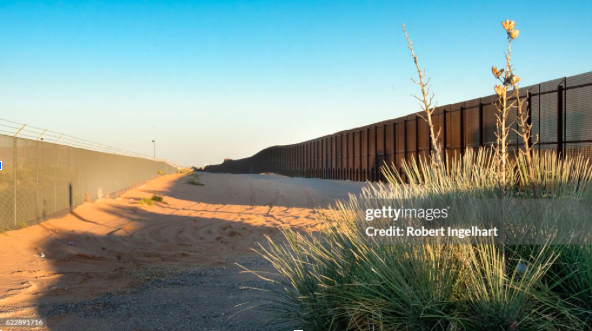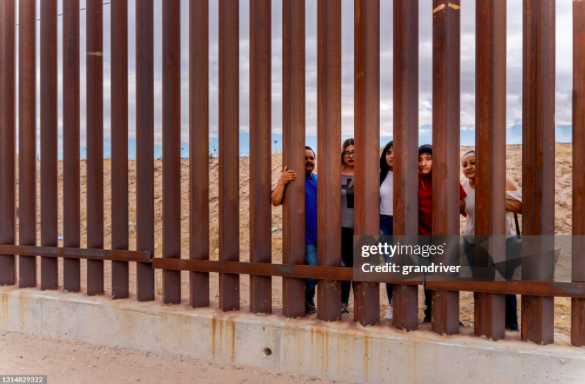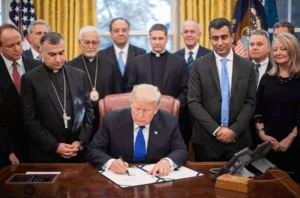The project to build a physical barrier to slow down immigration from Mexico dates back to 2006, when the Secure Fence Act was passed by the US Congress and signed by then President George W. Bush. The aim of this initiative was to build a wall along the Mexican border. The initial budget for the construction was 2 billion dollars, but the Democrats, who voted against it, retorted that it would take at least 7 billion dollars to see the barrier built. Ultimately, the aim was to build 1,120 km of fence on a border that is more than 3,000 km long.
At the time, this provoked a reaction from the European Union, which, through the intermediary of the Spaniard Javier Solana, head of foreign policy, denounced the act, saying that migrants should be treated « as people, not as criminals ».
But this is only the beginning. During his campaign, Donald Trump’s key measure was to extend the existing wall and have Mexico finance it. This project is divisive, with many initially seeing it as impossible for Mexico to finance the wall and believing that the state’s money should be put to better use. Others, fervent supporters of Trump, support this measure, which they believe will better regulate immigration and limit illegal trafficking across the border (organ trafficking, drugs, etc.).
Once elected, Trump will be looking for funds to finance his wall, as Mexican President Enrique Peña Nieto has declared that his country will not pay for its construction. Donald Trump promised that he would build 1,600 km of wall, at a cost of around 4 billion dollars. This figure will later be revised upwards as the Trump administration takes funds from military construction projects, the fight against drugs and the defense budget. In total, the budget for building the wall would amount to almost 18.4 billion dollars.
Nor were his promises kept when it came to extending the wall: by the end of his mandate, only 725 km had been built, less than half of what had been promised. Subtly, the wall only grew by a few kilometers; most of the work involved extending the height of walls that had already been built in the past.

With the arrival of Joe Biden in the White House, many thought that this would be the end of the extension of the wall. So it came as no surprise when Americans learned that the wall would be extended. The President said he had no choice, as he was clearly unable to interrupt funding already committed by his predecessor. The new section of the wall will be built in the Rio Grande valley on the Mexican border and will be 32 km long. In Mexico, President Andres Manuel López Obrador reacted: « This authorisation for the construction of the wall is a step backwards because it does not solve the problem, we must tackle the causes ».
However, this raises new questions. If even President Joe Biden, who had said he would not build « another foot of wall », is doing an about-turn, then it must be that walls are profitable from the point of view of their usefulness, financial cost, environmental impact and so on. Well, the answer is much more nuanced than that. On the one hand, there are the figures published by Homeland Security, which claim that the wall has reduced illegal entries into certain areas by almost 90%. In some sectors, this means that 90% is the maximum efficiency recorded, while some university studies suggest more modest results, or even the opposite. Cato Institute (think tank) revealed that the Border Patrol had seen more detentions and successful illegal crossings, even before the end of the Trump administration.The term « wall » may also be called into question, as the US Customs and Border Patrol does not describe this barrier as a « wall » but rather as a line of obstacles. Some sections of this barrier are simply large barricades to prevent vehicles from passing, but wide enough to let people through. What’s more, in places where the barriers are designed to prevent pedestrians crossing, it seems to play the role of a simple speed bump. It takes migrants a little longer to get round it, climb over it or saw through its bars. In fact, in the 3 years following the end of Donald Trump’s wall project, 3,272 people sawed through the bars of the « wall », i.e. almost 3 holes a day, costing a total of 2.6 billion to repair.

However, we must not forget the second main purpose of this « wall », namely better control of the various forms of trafficking that take place at the border. Well, here too the results are unconvincing. The various criminal organizations use their ingenuity to get through the barriers. They build tunnels under the wall, of which there are said to be almost 200, although this figure should be treated with caution as it is an estimate. They also use drones, catapults and cannons to get their goods through.
All in all, the wall is costing the American taxpayer a lot of money for questionable effectiveness. All this information seems to prove Arturo Sarukhan, who was Mexico’s ambassador to the United States between 2007 and 2013, right: « We cannot tackle the challenges of the 21st century with solutions from the 1st century BC ».










1 comment
I’m not sure exactly why but this site is loading very slow for
me. Is anyone else having this problem or is it a problem on my end?
I’ll check back later and see if the problem still exists.